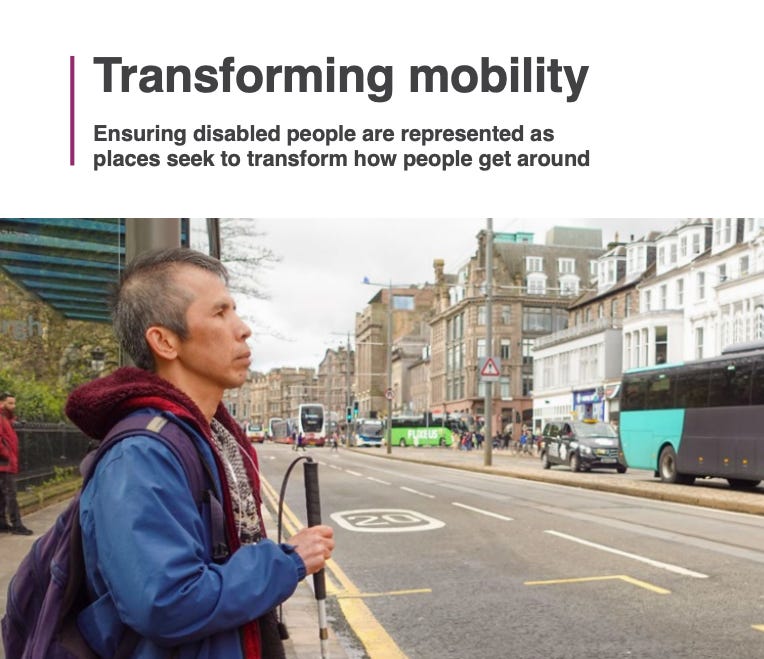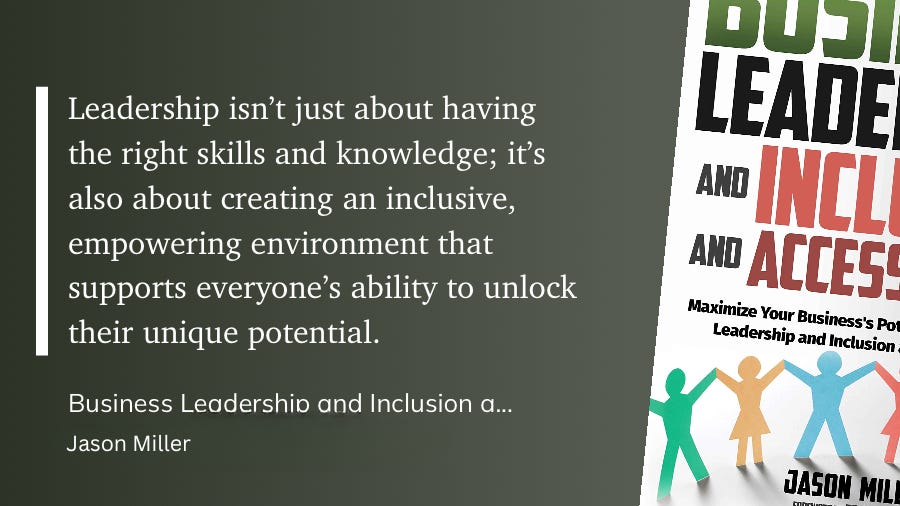Red Flags for Accessibility
What to Look For and How to Take Action
You can listen to the main article in this newsletter here:
Accessibility is a commitment to inclusion, dignity, and equal mobility. Identifying and addressing systemic red flags is crucial to building environments where everyone can participate fully and travel without barriers. Here are six warning signs that your organisation may have room for improvement, along with practical strategies to address them.

1. Accessibility is “Owned” Solely by the Accessibility Team
Red Flag: The belief that only the accessibility team is responsible for accessibility, while everyone else is uninvolved and not interested.
Accessibility must be embedded across all departments. When it is siloed, it becomes marginalised and under-resourced. It will never get the attention it needs.
How to Challenge:
Advocate for shared responsibility in job descriptions and performance metrics.
Talk to your senior leadership team and encourage them to drive the accessibility agenda.
Offer disability equality training for all staff, not just a few. Start with your senior leadership team.
2. Very Few Disabled Employees
Red Flag: The workforce does not reflect the diversity of the community, with few (if any) disabled employees.
Lived experience is invaluable in identifying barriers and shaping effective solutions. A lack of representation often signals inaccessible recruitment, onboarding, or workplace environments. It also impacts the experience of disabled customers. A company that is reluctant to hire disabled people will never deliver an inclusive customer experience.
How to Challenge:
Review and update recruitment processes for accessibility. Encourage the organisation to work with specialised recruitment agencies like Evenbreak to widen the talent pool.
Foster an inclusive culture where identifying as disabled is safe and supported.
3. Use of Medical Model Language and Approach
Red Flag: The company frames disability as a “problem” to be fixed, rather than addressing barriers in the environment.
The medical model focuses on deficits, while the social model recognises that barriers are created by society, not an individual problem of disabled people.
How to Challenge:
Educate staff on the social model of disability.
Audit internal and external communications for language that reinforces stereotypes, especially in job descriptions.
Involve disabled people in policy and service design processes to shift perspectives and improve the outcome.
4. Window Dressing and Inspiration Porn
Red Flag: Accessibility is showcased only for PR or compliance, not as a genuine value. Stories of disabled people are used for inspiration rather than empowerment.
Tokenistic efforts do not lead to systemic change and can alienate the very people they aim to support. Accessibility is a process not a one-off initiative that looks nice on LinkedIn.
How to Challenge:
Prioritise sustainable improvements over superficial gestures and window dressing.
Feature disabled voices as experts and leaders, not just stories of overcoming adversity or photo opportunities.
Regularly report on progress and areas for improvement with transparency. Be honest and don’t brag.
5. Accessibility Lead Earns Less Than £50K (in the UK)
Red Flag: The accessibility lead’s salary does not reflect their responsibility, influence, or expertise.
Underpaying accessibility leaders signals a lack of organisational value placed on accessibility, making it harder to attract and retain skilled professionals.
How to Challenge:
Benchmark salaries against similar roles in the sector and your organisation. Accessibility is not a charity job.
Advocate for appropriate compensation as part of broader organisational change.
Highlight the business case for accessibility, including customer satisfaction.
6. Nothing Ever Changes
Red Flag: Despite feedback or audits, accessibility barriers remain unaddressed over time.
Stagnation damages trust and signals that accessibility is not a priority.
How to Challenge:
Implement clear accountability and timelines for accessibility improvements.
Establish mechanisms for ongoing feedback from disabled customers and employees.
Celebrate and communicate progress internally, however small, to maintain momentum. But be honest. Don’t identify progress if it can’t be found.
First Step
Recognising these red flags is the first step to meaningful change. By challenging these patterns, everyone can drive a culture where inclusion is everyone’s responsibility, and progress is both visible and valued.
Some interesting links
Political leaders in the North of England are calling for significant investment in the region’s railway stations to make them accessible to all users.
Research from Transport for the North (TfN) highlights that most stations in the North are difficult or impossible for too many people to use.
TUI’s accessibility manager, Marina Snellenberg, explains how the company implemented an accessibility strategy to serve disabled customers.
An old railway carriage near Stratford station in London has recently opened as a cafe staffed by Deaf employees. It’s called “Carpenters Dialogue Express Café”. Address: 96 Gibbins Road, London E15 2HU, Opening hours: Monday-Saturday 07.00-19.00, Sunday - Closed. Use the ticket barrier and exit next to the Jubilee Line. There are some seating spaces inside, but most customers are currently served “to go” or on the very nice terrace and through the carriage window. There is a big ramp up to the railway carriage, but the carriage itself has a step (not sure if they have a ramp yet) and is a bit narrow inside. Worth a visit, especially to practice British Sign Language when ordering.
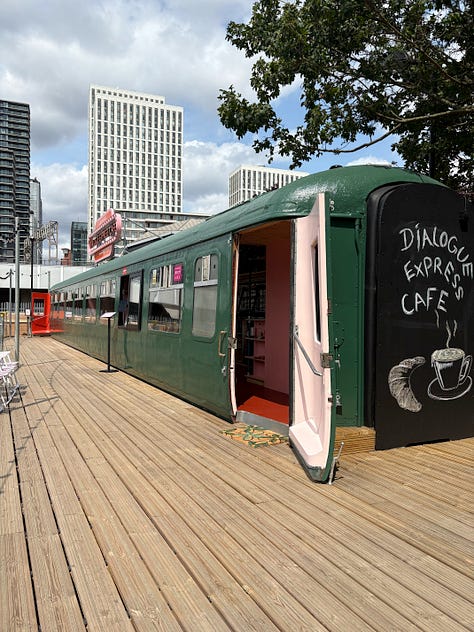
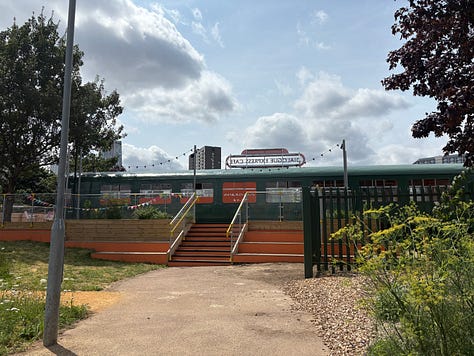

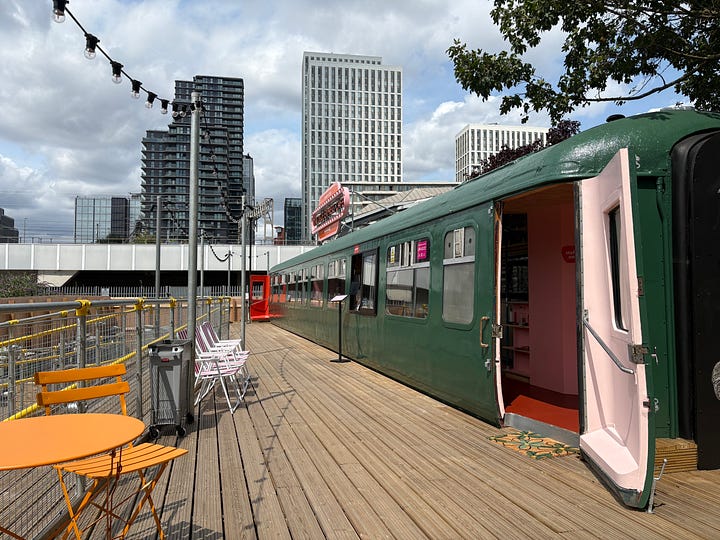
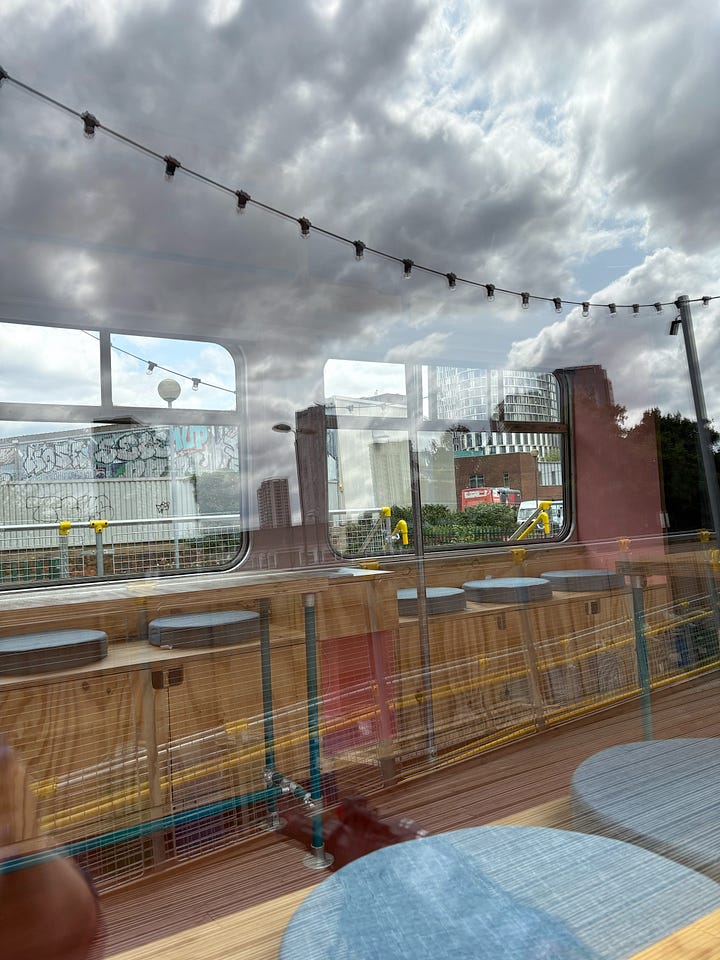
Something to read
Transport for All has been working with Sustrans to explore ways to include disabled people in transport and city planning. Introducing zebra crossings on side roads was one of five ‘big ideas’ in the research, called Transforming Mobility. The Motability Foundation funded the work.
Some final words
The Accessible Link is a reader-supported publication. So, if you like what you’re reading, consider to…
Who is writing this newsletter?
I’m Christiane Link, and I improve the customer experience in aviation, transport, and travel. I worked as a journalist for over two decades and travelled extensively for business and leisure. I’m a wheelchair user.
Work with me
Whether you're a Customer Service Director, a Head of Customer Experience, a corporate Accessibility Manager, a DEI leader, a transport planner, or a member of a disabled employee resource group, I can help you make your organisation more inclusive. You can book me for speaking engagements or hire me as a consultant for your accessibility or DEI strategy, communications advice and other related matters. I have worked for airlines, airports, train operators, public transport providers, and companies in other sectors.
If you want to read more from me, follow me on LinkedIn, Twitter, Bluesky or Mastodon. You can also reply to this email if you want to contact me.
.


